An essential skill in any poker variant is being able to calculate how many outs we have. In some formats, this process is harder than others.
For example, in Hold’em, it is relatively straightforward to calculate how many outs we have to make our hand. In PLO (Pot Limit Omaha) things can become a lot more challenging since we are dealt four cards preflop instead of two.
Here we will look at some common Pot Limit Omaha scenarios, and calculate our number of outs.
Scenario 1 – The 13-Out Nut Wrap
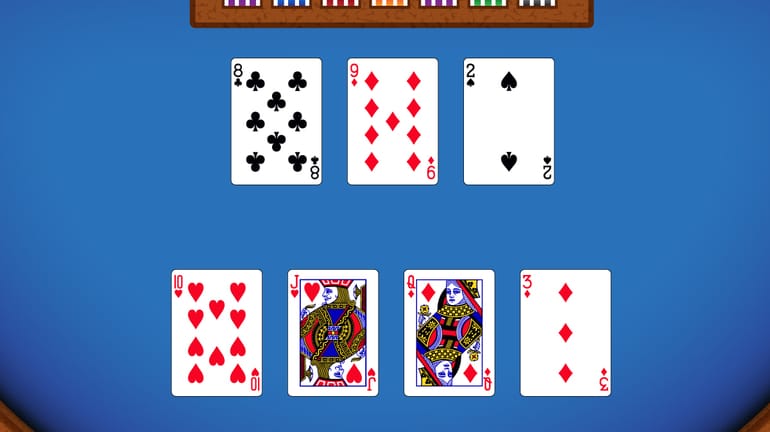
Board: 8c9d2s
Our Hand: ThJhQd3d
In PLO, any straight draw with more than eight outs is referred to as a “wrap”.
In the above scenario, any Ten, Jack, Queen or Seven gives us the nut straight.
Let’s break that down by the number of remaining cards for each.
Seven: 4 left in the deck
Ten: 3 left in the deck (because we have one in our hand)
Jack: 3 left in the deck (because we have one in our hand)
Queen: 3 left in the deck (because we have one in our hand)
Total: 13 outs
If we add everything together, that’s 13 outs to make the nut straight.
Calculating our wrap outs mid-hand tends to steal our focus away from what’s essential. It is far better if we can spot the pattern and automatically know how many outs a particular type of wrap gives us.
Here we have three cards “above” the board in direct consecutive order resulting in the thirteen-out “nut” wrap.
Scenario 2 – The 13-Out Non-Nut Wrap
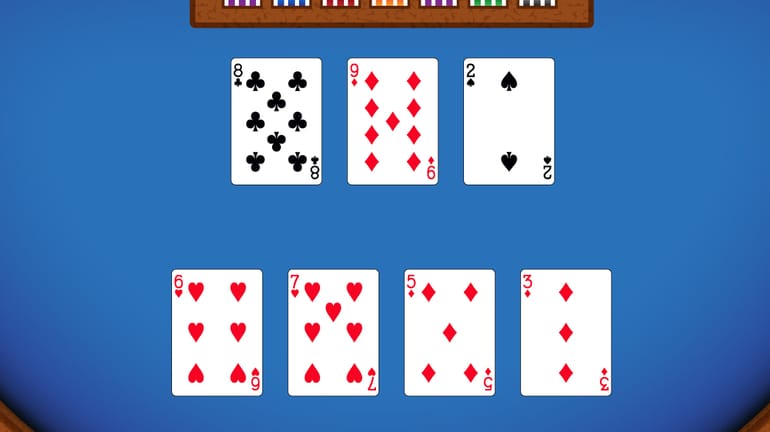
Board: 8c9d2s
Our Hand: 6h7h5d3d
Here we have the same number of outs as above. Any Ten, Five, Six or Seven gives us a straight. There is a crucial difference, however. Since our cards are now “below” the board, most of our straight outs are no longer nutted.
This lesson is critical in Omaha. We don’t purely want to calculate our number of outs but also the quality of our outs. Having fewer (but nutted outs) can sometimes be better than having more (but dominated) outs.
Five :3 left in the deck.
Sox: 3 left in the deck
Seven: 3 left in the deck
Ten: 4 left in the deck
Total: 13 outs
Scenario 3 – The 16-Out Nut Wrap
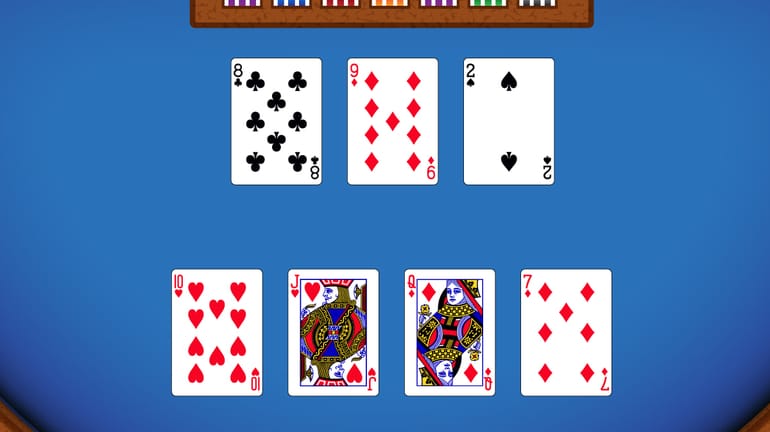
Board: 8c9d2s
Our Hand: ThJhQd7d
This example is very similar to Scenario 1, but now all four of our hole cards contribute to our wrap. The Seven gives us an additional way to make a straight since if a Six falls on the turn, we have the Ten-high straight.
Six: 4 left in the deck
Seven: 3 left in the deck
Ten: 3 left in the deck
Jack: 3 left in the deck
Queen: 3 left in the deck
Total: 16 outs
Scenario 4 – The 17-Out Non-Nut Wrap
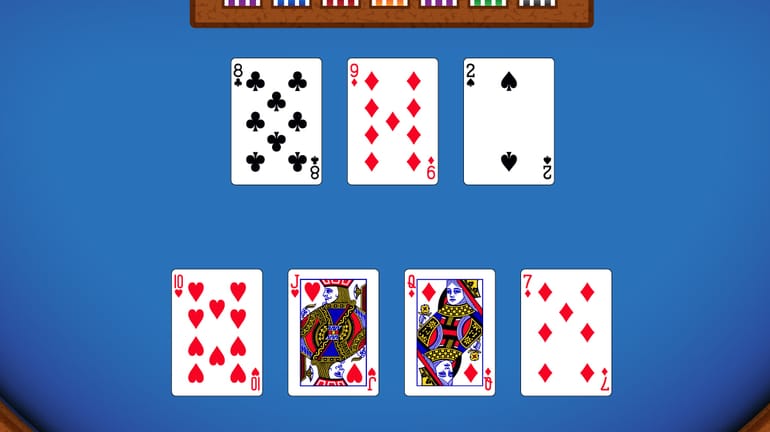
Board: 8c9d2s
Our Hand: ThJh3d7d
Here we only use three of our hole cards,and yet we have one more out than in the previous example. However, three of our 17 outs are non-nut. If the turn is a Ten, we hold J7xx for the non-nut straight (TJxx would be the nuts).
The reason we have one additional out here is that we don’t block our own outs by holding the Queen (but the downside is that we are no longer nutted on a Ten-turn).
Six: 4 left in the deck
Seven : 3 left in the deck (because we have one in our hand)
Ten: 3 left in the deck (because we have one in our hand)
Jack: 3 left in the deck (because we have one in our hand)
Queen: 4 left in the deck
Total: 17 outs
Scenario 5 – The “Maine To Spain” 20-Out Non-Nut Wrap
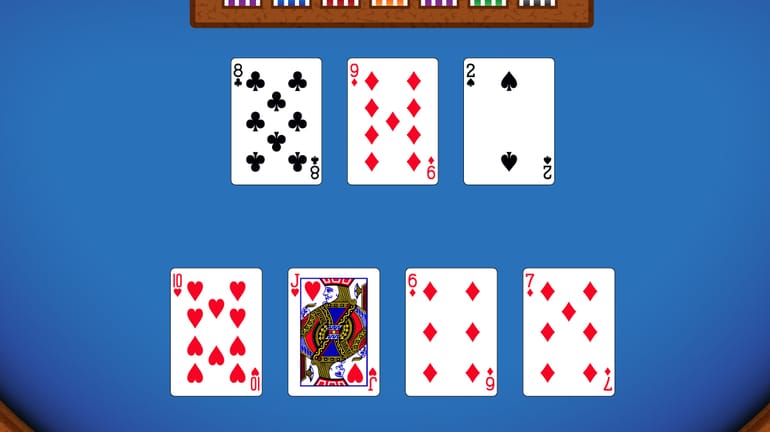
Board: 8c9d2s
Our Hand: ThJh6d7d
The biggest possible straight draw in PLO has 20 outs, although it’s impossible for all of the outs to be nutted.
Five: 4 left in the deck
Six: 3 left in the deck
Seven: 3 left in the deck
Ten: 3 left in the deck
Jack: 3 left in the deck
Queen: 4 left in the deck
Total: 20 outs
That’s a total of 20 outs. Note that there has to be a double-gap in our hand for this type of wrap to be possible.
Scenario 6- Combo Wrap
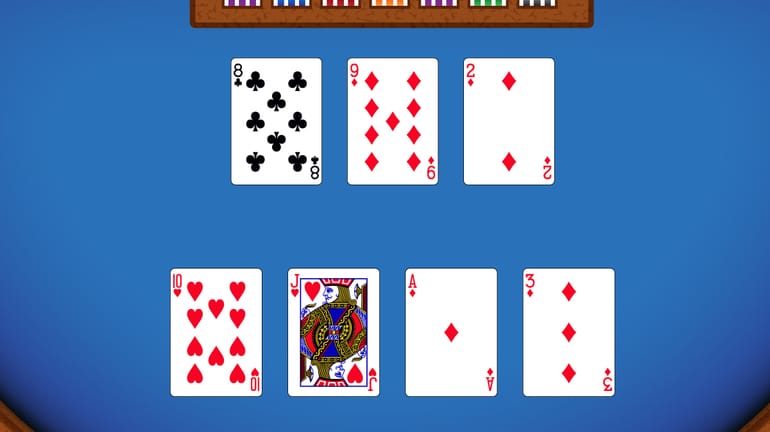
Board: 8c9d2d
Our Hand: ThJhAd3d
Although we would love to list every possible pattern that can occur in PLO, there are too many for it to be practical. This situation is especially true when we factor in that any of our wraps may have a flush-draw to go with it.
In this example, we have an open-ended straight draw and a flush draw.
Open-enders always have eight outs, but in this case, two of our straight outs will complete the flush. We will hence count six straight outs along with our nine outs to make the flush for a total of 15 outs.
Players with a Hold’em background might be familiar with this as the 15-out oesd + flush-draw combo-draw. But, in PLO, the number of outs is not necessarily static due to blocker effects.
For example, if we hold the Jd instead of the Jh we now only have 14 outs with our combo draw since we block one of our own flush-draw outs -
Non-diamond Queens: 3
Non-diamond Sevens: 3
Diamonds: 9
Total: 15 outs
Pointers for Calculating Outs in PLO
We have, hopefully, seen that pattern recognition is a great way to speed up calculating our number of outs in PLO.
However, there are likely too many different patterns to memorise, so we will need to get proficient at calculating our number of outs on the fly when necessary.
